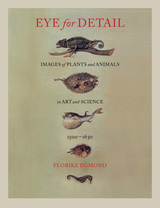2 books about Egmond, Florike

The Civilization of Crime
Violence in Town and Country since the Middle Ages
Edited by Eric A. Johnson and Eric H. Monkkonen
University of Illinois Press, 1996
Along with most of the rest
of Western culture, has crime itself become more "civilized"?
This book exposes as myths the beliefs that society has become more violent
than it has been in the past and that violence is more likely to occur
in cities than in rural areas.
The product of years of study
by scholars from North America and Europe, The Civilization of Crime
shows that, however violent some large cities may be now, both rural and
urban communities in Sweden, Holland, England, and other countries were
far more violent during the late Middle Ages than any cities are today.
Contributors show that the
dramatic change is due, in part, to the fact that violence was often tolerated
or even accepted as a form of dispute settlement in village-dominated
premodern society. Interpersonal violence declined in the seventeenth
and eighteenth centuries, as dispute resolution was taken over by courts
and other state institutions and the church became increasingly intolerant
of it.
The book also challenges a
number of other historical-sociological theories, among them that contemporary
organized crime is new, and addresses continuing debate about the meaning
and usefulness of crime statistics.
CONTRIBUTORS: Esther Cohen,
Herman Diederiks, Florike Egmond, Eric A. Johnson, Michele Mancino, Eric
H. Monkkonen, Eva Österberg, James A. Sharpe, Pieter Spierenburg,
Jan Sundin, Barbara Weinberger
of Western culture, has crime itself become more "civilized"?
This book exposes as myths the beliefs that society has become more violent
than it has been in the past and that violence is more likely to occur
in cities than in rural areas.
The product of years of study
by scholars from North America and Europe, The Civilization of Crime
shows that, however violent some large cities may be now, both rural and
urban communities in Sweden, Holland, England, and other countries were
far more violent during the late Middle Ages than any cities are today.
Contributors show that the
dramatic change is due, in part, to the fact that violence was often tolerated
or even accepted as a form of dispute settlement in village-dominated
premodern society. Interpersonal violence declined in the seventeenth
and eighteenth centuries, as dispute resolution was taken over by courts
and other state institutions and the church became increasingly intolerant
of it.
The book also challenges a
number of other historical-sociological theories, among them that contemporary
organized crime is new, and addresses continuing debate about the meaning
and usefulness of crime statistics.
CONTRIBUTORS: Esther Cohen,
Herman Diederiks, Florike Egmond, Eric A. Johnson, Michele Mancino, Eric
H. Monkkonen, Eva Österberg, James A. Sharpe, Pieter Spierenburg,
Jan Sundin, Barbara Weinberger
[more]

Eye for Detail
Images of Plants and Animals in Art and Science, 1500-1630
Florike Egmond
Reaktion Books, 2017
Image-transforming techniques such as close-up, time lapse, and layering are generally associated with the age of photography, but as Florike Egmond shows in this book, they were already being used half a millennium ago. Exploring the world of natural history drawings from the Renaissance, Eye for Detail shows how the function of identification led to image manipulation techniques that will look uncannily familiar to the modern viewer.
Egmond shows how the format of images in nature studies changed dramatically during the Renaissance period, as high-definition naturalistic representation became the rule during a robust output of plant and animal drawings. She examines what visual techniques like magnification can tell us about how early modern Europeans studied and ordered living nature, and she focuses on how attention to visual detail was motivated by an overriding question: the secret of the origins of life. Beautifully and precisely illustrated throughout, this volume serves as an arresting guide to the massive European collections of nature drawings and an absorbing study of natural history art of the sixteenth century.
Egmond shows how the format of images in nature studies changed dramatically during the Renaissance period, as high-definition naturalistic representation became the rule during a robust output of plant and animal drawings. She examines what visual techniques like magnification can tell us about how early modern Europeans studied and ordered living nature, and she focuses on how attention to visual detail was motivated by an overriding question: the secret of the origins of life. Beautifully and precisely illustrated throughout, this volume serves as an arresting guide to the massive European collections of nature drawings and an absorbing study of natural history art of the sixteenth century.
[more]
READERS
Browse our collection.
PUBLISHERS
See BiblioVault's publisher services.
STUDENT SERVICES
Files for college accessibility offices.
UChicago Accessibility Resources
home | accessibility | search | about | contact us
BiblioVault ® 2001 - 2024
The University of Chicago Press









